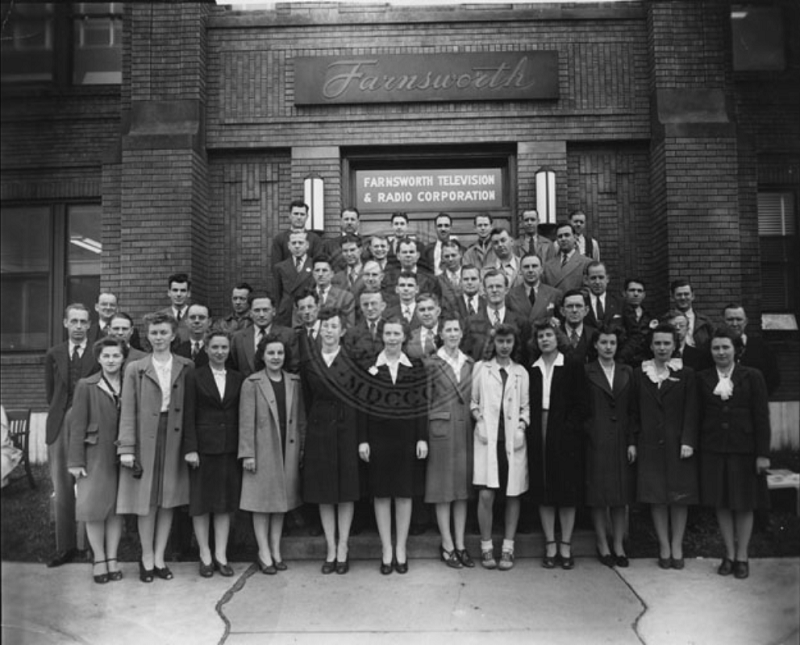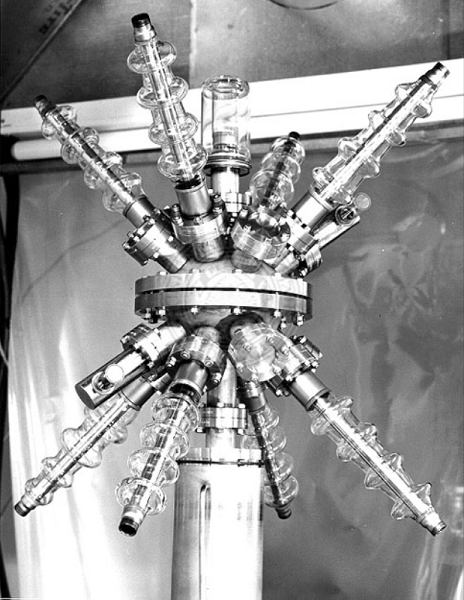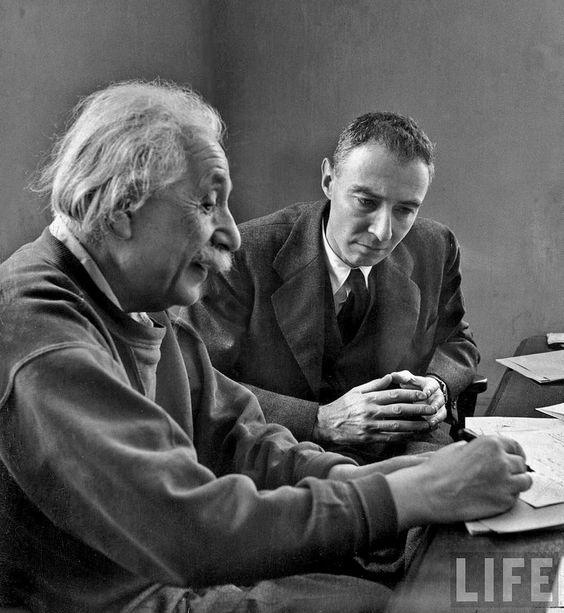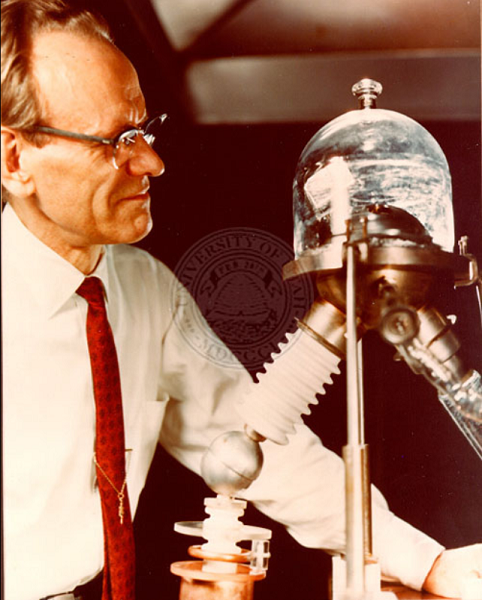See PART I for Philo Farnsworth’s struggle to commercialize the
television and his involvement in the 1935 patent suit against RCA.

In 1938, investors in the Farnsworth Television and Radio Corporation (FTRC) scoured the nation for a manufacturing plant that would allow them to profit from Farnsworth’s invention: the television. They selected the former Capehart Phonograph Company building in Fort Wayne, Indiana because, according to biographer Paul Schatzkin, the “company’s plant was an ideal facility, and the name ‘Capehart’ was expected to lend a certain cachet to the eventual Farnsworth product line.”
The FTRC plant opened in 1939, stimulating the city’s economy with the production of radios, phonographs and television equipment. Not only did Farnsworth oversee production, but continued his scientific endeavors with a research department that, according to his wife Pem, operated at “high efficiency.” She noted that Farnsworth’s “input breathed energy into the men, and in turn their reciprocation kept him on his toes.” The plant’s opening coincided with the outbreak of World War II and Fort Wayne would experience the same economic revival as the nation through the manufacture of war goods.

Shortly after the FTRC began operations in Fort Wayne, U.S. President Franklin Delano Roosevelt required all television and radio materials be converted to the production of military equipment. With America’s involvement in World War II, the FTRC expanded throughout Indiana, culminating in a total of seven factories in the state during the war years, including those in Marion, Huntington and Bluffton. Donald Sinish, who worked with Farnsworth at the FTRC Research Department, recalled that the Ft. Wayne facilities were “rapidly converted to production of military equipment and engineering channeled to development of radio communication, missile guidance and radar systems.”
Despite the company’s expansion, Farnsworth’s quest to commercialize television was halted by the production of war materials and the FCC’s hesitation to establish broadcasting channels and standards, narrowing the period in which he could benefit from his patents, which expired in 1947. Disheartened by the obstacles preventing him from capitalizing on his invention, Farnsworth moved to Maine and vowed never to return to Fort Wayne.

But when the company struggled to repay war loans that allowed for expansion, Farnsworth returned to Fort Wayne and reluctantly convinced investors to sell FTRC to International Telephone and Telegraph (ITT). The Fort Wayne company continued to produce televisions and Farnsworth researched and experimented in his lab. Pem stated that the Fort Wayne lab “developed a device for the United States early-warning system” that could detect and destroy missiles and planes in the early atomic era. Farnsworth’s primary post-war research interests centered around developing a low cost form of fusion. Creating self-sustaining fusion is equivalent to bottling a star, a nearly impossible task that has yet to be conquered.
Farnsworth hoped to usher in the “high-energy era” with fusion, as a minuscule amount could power a whole city without the pollution of fossil fuels. Pem stated that Farnsworth’s fusion idea “gained solidarity early in 1947,” when a mutual friend set up a phone call between him and Albert Einstein. After discussing scientific theories for about an hour, Pem recalled “Phil reappeared, his face aglow from the excitement of finding someone who understood what he was talking about.”

Allegedly, Einstein had developed similar theories, but “was so shocked that his work had been used to produce the atomic bombs dropped on Japan that he vowed never to contribute further.” However, he encouraged Farnsworth to pursue the fusion work for “peaceful” purposes and requested Farnsworth contact him once he worked out the mathematics. Pem contended that “it was a great psychological relief to find another human being who shared his increasingly unique perspective” and that he found Einstein to be a “fellow traveler in the rarefied regions of the physical universe where his mind now dwelt.”
Encouraged, Farnsworth established a basement laboratory in Fort Wayne and devised a “fusion reaction tube” called the Fusor, which he patented in 1968. He reportedly achieved fusion in Fort Wayne, but it is unclear whether or not he generated self-sustaining fusion. Unfortunately, Einstein died before Farnsworth could share his mathematics with him and, upon his passing, Farnsworth felt more alone than ever. The burden of his genius again overwhelmed him when he collaborated with employees to finalize his second fusion patent. According to Pem, upon realizing that they too did not grasp the “vital point of his concept” he closed his briefcase and informed them “’I have given you all the material you need to finish this patent. Now I am going home and get drunk!’”

After self-imposed isolation, he moved to Provo, Utah with Fort Wayne employees to pursue fusion away from ITT’s influence. In 1966, he established Philo T. Farnsworth Associates and collaborated with Brigham Young University on sustaining fusion. Eventually, Farnsworth’s health failed and he cancelled the fusion project. According to Schatzkin, family members suspected he carried the secret of fusion to his grave out of concern that humanity was not spiritually prepared for it.
Farnsworth was reportedly disgusted with television programming for its failure to facilitate his noble goals of exchanging cultures and educating viewers. Pem stated that while watching the 1969 moon landing Farnsworth professed “this has made it all worthwhile.” Ironically, Farnsworth himself appeared only once on the medium he invented on the program I’ve Got a Secret. Farnsworth passed away March 11, 1971 in Salt Lake City, Utah.
Philo T. Farnsworth kept a plaque on his desk that read “MEN AND TREES DIE—IDEAS LIVE ON FOR THE AGES.” Farnsworth’s life serves as a testament to this. Schatzkin eloquently summarized his contributions, stating “There are only a few noble spirits like Philo T. Farnsworth . . . who can alter the course of history without commanding great armies.”
